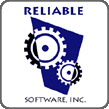|
SOA is an emerging architectural style that…
·
Is
business driven
·
Enhances
IT’s flexibility and responsiveness to changing business
needs
·
Improves a business' ability to respond to rapidly evolving customer requirements
·
Reduces integration work for business solutions
·
Decreases
the IT application maintenance workload
·
Shrinks
the development workload for new applications
Early experience deploying large-scale Services-Oriented
Architectures clearly demonstrates that successful
enterprise-SOA implementation require far more than
simply building SOAP wrappers and using WSDL to document
Web Services.
SOA Implementation
provides a
comprehensive and realistic road map for putting the
Services-Oriented Architecture promise into practice.
This two-day seminar examines in detail the technical,
organizational and management issues surrounding the
planning and implementation of a SOA. It presents
practical information and guidance that will help
organizations plan the deployment of SOAs that employ
internal and external Web Services to execute
intra-business processes and inter-business processes.
SOA Implementation
uses case
studies, examples, and business language to introduce
the topics and explain the choices that organizations
face as they plan and build their Services-Oriented
Architectures. Seminar topics include:
-
Decisions, issues
and challenges concerning the implementation of
business processes as applications using a
Services-Oriented Architecture
-
SOA design,
deployment and implementation options and
alternatives
-
Best practices for
implementing business processes via SOA, including
major implementation phases and their component
steps.
What
You Will Learn
SOA
Implementation Decisions, Issues and Challenges
-
How to retrofit
legacy applications as Web Services
-
How the SOA
approach fits with conventional middleware
-
How to determine
what business processes & services are good SOA
candidates
SOA
Implementation Options and Alternatives
-
How to choose your
1st SOA project
-
How to define
internal intra-business processes & external
inter-business processes
-
How to build an SOA
implementation project plan
-
How to establish
security rules via WS-Security and WS-Policy
-
How to make SOA
deployment decisions
-
How to govern an
SOA
How
to implement business processes via SOA
-
How to design a
good reusable web service
-
How to evolve an
existing architecture into a Service Oriented
Architecture
-
How to build a Web
Service
-
How to incorporate
SOAP intermediaries
-
How to build and
coordinate large-scale, long-lived asynchronous
processes
-
How to secure
services
-
How to set policies
for services
-
How to utilize
evolving best practices in SOA definition,
construction and deployment
Who
Should Attend?
The
IT and Business Area Leaders, Managers and Architects
who plan and execute the SOA implementations
The
technical, business analyst and business area staff who
design, create and deploy SOA applications composed of
Web Services
Participants in this seminar should understand the
concepts and principles of Service Oriented Architecture
and Web services.
Seminar
Outline
(2 days)
Part 1:
Understanding Service Oriented Architecture
-
Motivation for Service Oriented
Architecture
-
Fundamental Principles of Service
Oriented Architecture
-
A Parable for Service Oriented
Architecture
-
OASIS SOA Reference Model
-
What is a Service?
-
Business Capabilities
-
What is Policy?
-
What does Loose Coupling Really
Mean?
-
Relationship between SOA and
Object Orientation
-
From Applications to Services
-
A Parable for SOA Governance
-
Agility and. Reuse in SOA
-
Relationship of SOA to Web
Services
-
Previous Technological Attempts
at SOA
-
SOA Pioneers
Part
2: Medical Information System Case Study
-
What are the
Business Problems Posed By the Case Study?
-
How can Service
Oriented Architecture Help Solve Them?
-
What are the
Business Processes?
-
What are the
Business Services?
-
Trust Boundaries
and Distributed Services
-
Service Description
-
Information Model
-
Data Definition and
Data Semantics
-
Versioning
-
Behavior Model
-
Action Model
-
Process Model
-
Policies and
Contracts
-
Choosing Your First
Project
-
Moving Beyond Your
First Project
-
Medical Information
System First Project
Part 3: Architecting
a Simple SOA Project
-
Scheduling Critical Care
-
Mutual Trust
-
Critical Care
Application
-
Capabilities and
Explicit Boundaries
-
Critical Care
Messages
-
Critical Care
Policies
-
Service Description and Versions
-
Long Running Transactions
-
Real World Effects
-
Role of User
Interfaces in SOA
-
Semantics and
Ontology
-
Loose Coupling
-
Advantages of the
SOA Approach
Part 4:
Implementing Your Simple SOA
-
Message Transport
-
SOAP Protocol
-
Admittance Request
-
Admittance Notification
-
Admission Failure
-
SOAP Fault
-
SOAP Intermediaries
-
Critical Care Scenario
-
SOAP Attachments
-
Medical X-Rays
-
WS-Addressing and Message Routing
-
WSDL and Messaging Metadata
-
Medical Admissions WSDL
-
Interoperability Profiles
-
Reliable Messaging and WS-Reliable Messaging
-
Policy and WS-Policy
-
WS-Metadata Exchange
-
Security
-
WS-Security, WS-Security Policy
-
Trust
-
Secure Sessions
-
Implementation Strategy
Part 5:
Enterprise SOA
-
Moving to an Enterprise SOA
-
IT Governance
-
Enterprise SOA
-
Beyond the Enterprise
-
Beyond Critical Care Admissions
-
Enterprise
Data Ownership
-
Types of Enterprise Data
-
Data Scalability
-
Federated Identity
-
Classic Transactions
-
WS-Atomic Transaction
-
Long Running Transactions
-
Coordination and WS-Coordination
-
Composite Applications
-
BPM Servers and Orchestration
-
Hospital Scenario
-
Hospital Orchestration
-
Compensation
-
Security
-
Discovery
-
Fault Handling
-
Policy
-
Distributed Policy
-
Policy Conflicts
-
Summary
|



